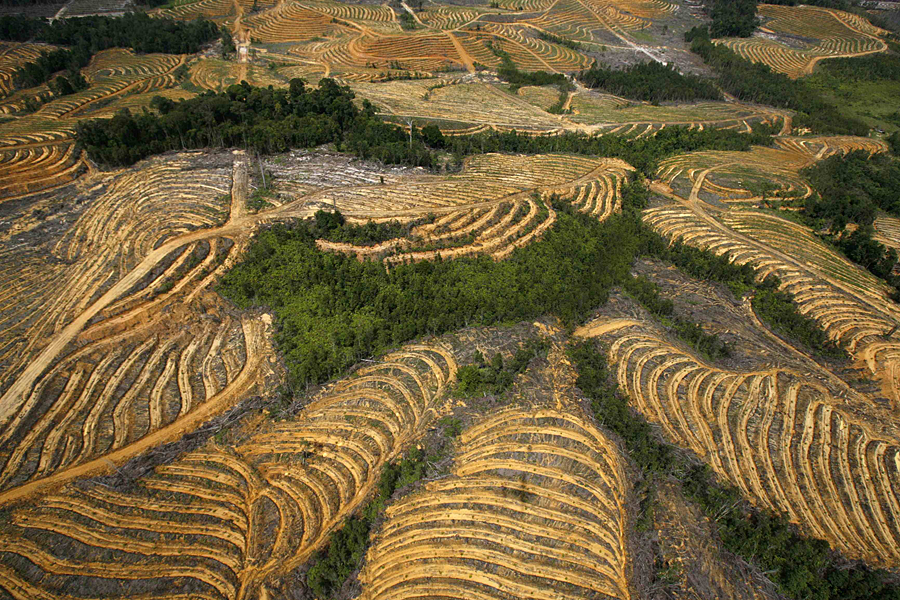Can you save the rainforest and still profit? Research team finds a way
Loading...
What do a bar of soap, packaged cookies, and mascara all have in common? The answer might surprise you. In fact, you might have even used the ingredient to power your trip to the supermarket.
They’re all made with palm oil.
Palm oil has been at the heart of Malaysia’s and Indonesia’s recent economic booms, and together the two nations produce nearly 85 percent of the world’s supply.
Malaysia is not the only country to experience the growth of the palm oil industry. Colombia, Indonesia, and the Philippines have also experienced annual growth rates upwards of 5 percent, with the Philippines’ annual growth rate exceeding 10 percent.
But this expansion hasn’t been without a cost. Recent forest fires in 2013 and 2014 in Indonesia have at least partially been blamed on the process of clearing out hectares of land for oil palm plantations. Other issues such as water pollution and soil erosion and habitat loss have also arisen as a result of land conversion in SE Asia.
A study led by Ian Bateman of the University of East Anglia along with researchers from the University of Vermont and the World Wildlife Fund presents a possible solution to the problem of diminishing animal species biodiversity near the oil palm plantations.
The research team was inspired to begin because, “We were convinced that the only way to really save biodiversity is to get the power of the business community behind it – and not just a 'good-will' corporate social responsibility drive – rather to come up with approaches which meant that companies made more money from producing goods in ways that helped conservation than producing in ways that damaged biodiversity,” says lead author Bateman in an email.
The research team collected data over a four-year-period on a palm-oil plantation comprising 32,000 hectares in central Sumatra, an island of Indonesia. The study focused on observing IUCN Red List mammals, including the agile gibbon and the smooth-coated otter. Scientists also walked each of the transects lines in the plantation about 28 times over the span of the study in order to count species diversity.
The research team determined that the most effective location for conservation was at the perimeters of the plantations, because that was where the biodiversity was the strongest; they suggested spatial targeting could lead to substantially reduced costs of privately-funded conservation.
The scientists then conducted market research tests to assess the extent to which consumers would be willing to bear the costs of more sustainable farming practices.
In the experiments, consumers in the UK were presented with two tubs of margarine. The customers were then asked about their willingness to pay more for the product that had “conservation grade” palm oil. Their research indicated that the consumers were willing to pay between 15 to 56 percent more for the margarine that had palm oil created under more sustainable farming practices. In fact, the research team was surprised by how willing the consumers were to pay for products that had a conservation value, says Brendan Fisher, an environmental scientist at the World Wildlife Foundation.
A 15 percent increase in product price could lead to the conservation of close to 20 percent of land of a large (32,000 hectare) palm oil farm according to the study’s findings.
The study notes, however, that the United States, Europe, and Australia comprise only 20 percent of the imports of palm oil. The majority of the oil goes into processed consumer goods, including food.The country in which this survey was conducted, the United Kingdom, collectively imports less than 1 percent of the total palm oil produced in the world.
“The bulk of palm oil on the market is used for cooking oil in India and China. So it’d probably be a harder sell to get consumers of cooking oil to be impressed by a sustainability argument,” notes Dr. Fisher. “It’s an input to production [good] instead of some marketed good at the end like cookies…”
But a number of companies have taken positive steps towards improving their ecological practices in the palm oil industry. “I think it’s one of the most fascinating examples of market price transformation. I didn’t expect to see, at least on paper, all of the commitments from companies including end users, the middlemen like Wilmar International and Cargill, and then producers as well. I think the challenge ahead of us is to ensure ... that the rubber meets the road,” says Rolf Skarr, forests campaign director at Greenpeace.
When asked about how to verify the conservation commitments made by palm oil companies to sustainability organizations, Robin Naidoo a senior conservation scientists at the World Wildlife Fund suggested supply chain verification, third-party evaluation, and monitoring via satellite imagery.
“We’re continually finding spaces where businesses can find win-wins for both biodiversity and production and it’s going to be incredibly important given the increased demand for fuel, food, and fiber over the next 50 years,” says Fisher. “There are places for win-wins.”






